Das kurze Ende eines langen Traums
„We’ll say, that was just another time,
One day, we will put it all behind,
We’ll say, that was just another day on Earth“
– Brian Eno, Just Another Day
1 – Radio und TagesrestHeute früh, in meiner letzten Traumphase, war ich wieder halbwegs in der Wirklichkeit angekommen. Mit dem Radiokollegen Karsten M. sass ich zusammen und erzählte unserem einstigen Chef Harald, wie oft ich schon meine letzte Sendung in Angriff genommen hätte, und das Loslassen geübt. Aber es standen natürlich noch eine und noch eine Sendung an, ich war in der Redaktion, und Martina B. öffnete den Computer, damit ich letzte Änderungen der Playlist vornehmen könnte.
Etwas früher in der Nacht ging es wilder zu, und daran ist auch Martina Weber und ihr Text zu Monte Hellmans Film „Two-Lane Blacktop“ schuld, obwohl ich ihn noch gar nicht gelesen habe. Aber ich plante eine Art „parallel watching“ und bestellte mir ein kleines Paket mit dem Film. Der Film war 1971 komplett an mir vorübergegangen, und bis vor zwei Tagen wusste ich nicht mal was von seiner Existenz. Gestern Abend huschte ich, vorm Einschlafen, über die ersten zwei Absätze eines längeren, beiliegenden Essays, und erfuhr, dass der Film, in der Blüte meiner jungen Hippiejahre (in dem Jahr, als ich Joni Mitchell und Miles Davis entdeckte) gar nicht in Deutschland in den Kinos lief. Hollywoods schräges Filmbusiness! Über den Inhalt las ich nichts.
2 – A Day In The Life
Und gestern sorgte noch etwas anderes dafür, dass ich einen besonderen Traum von alten Zeiten erleben sollte. Ein Blogtext von Richard Williams und seinem 16. Lebensjahr, er ist sieben Jahre älter als ich, und er beschreibt etwas, das aus einer Ära und einer Stadt stammt, in die mich meine allererste Zeitreise in einer Zeitmaschine wohl hinführen würde.
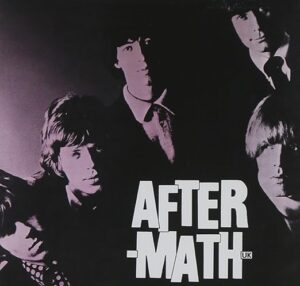
„Als ich neulich ausräumte, stieß ich auf einen kurzen Versuch, im Winter 1963/64 ein erzählendes Tagebuch zu führen. Ich war 16 Jahre alt und ein paar Monate davon entfernt, die Schule verlassen zu dürfen, um es höflich auszudrücken. Der größte Teil des Tagebuchs handelte von Mädchen, und zwar so sehr, dass es direkt in den Schredder wanderte. Aber eine Seite schien mir erhaltenswert. Sie beschreibt einen Schulausflug von Nottingham nach London, der von einem unserer Englischlehrer organisiert worden war, um Joan Littlewoods neues Musical „Oh, What a Lovely War!“ zu sehen, das gerade von seiner ersten Aufführung im Theatre Royal Stratford East ins Wyndham’s Theatre in der Charing Cross Road an der östlichen Grenze von Soho verlegt worden war. Wie im Tagebucheintrag beschrieben, kamen wir in Soho an und waren auf uns allein gestellt. Samuel Pepys ist es nicht, aber es ist ein kleiner Schnappschuss von etwas Besonderem. Wie Sie sehen werden, schwänzte ich am Tag vor der Reise die Probe des Schulorchesters, besuchte ein lokales Café, das mit vollem Namen „Don Juan“ hieß, nahm Kontrabassunterricht und kaufte eine Beatle-Jacke (braun, Rundhalsausschnitt, irgendwelche Zierknöpfe, bei C&A, glaube ich). An diesem Abend gingen ein Freund und ich in die Rainbow Rooms, wo gelegentlich Beatgruppen auftraten, um die Renegades, eine Band aus Birmingham, und die Rocking Vulcans, eine lokale Gruppe, zu sehen und mit einem Mädchenpaar namens Anne und Jean zu tanzen.
In Soho angekommen, schien es das Ziel zu sein, so viele Cafés wie möglich zu besuchen, insbesondere das 2i’s und das Heaven & Hell, die nebeneinander in der Old Compton Street lagen. Ich erinnere mich (habe es aber nicht aufgeschrieben), dass, als wir draußen standen, ein Pärchen mit minestens nacktem Oberkörper den Kopf aus einem Fenster im ersten Stock steckte, um mit jemandem auf der anderen Straßenseite zu plaudern; das muss das Leben sein, dachte ich. Wir besuchten auch Act 1 – Scene 1, direkt auf der anderen Straßenseite, und Le Macabre in der Meard Street, wo die Kunden auf Särgen saßen.
Und es gab Plattenläden, darunter das kurzlebige Ronnie Scott’s in der Moor Street und zwangsläufig Dobell’s. Im Harlequin in der Berwick Street (das zwei Jahre zuvor eröffnet worden war) kaufte ich eine Prince Buster 45 auf dem Blue Beat Label (das dem später als Ska bekannten Idiom seinen Namen gab) und „Orange Street“ b/w „JA Blues“ von den Blue Flames. Das war auf dem R&B-Label, von dem ich heute weiß, dass es nach seinen Gründern Rita und Benny King (früher Isen oder Issel) benannt wurde, die einen Plattenladen in Stamford Hill betrieben und nebenbei ein Label hatten, um die vielen Westinder zu versorgen, die sich in der Gegend niedergelassen hatten.
Nach der brillanten und sehr bewegenden Show im Wyndham’s, die von der Originalbesetzung, darunter Barbara Windsor und Victor Spinetti, aufgeführt wurde, schlenderten wir zum unteren Ende der Wardour Street, wo wir feststellen mussten, dass das Whisky A Go-Go und der Flamingo’s All Nighter außerhalb unserer Preisklasse lagen. Aber irgendwo namens Meg’s gab es den „besten Hamburger, den ich je gegessen habe“ – mit ziemlicher Sicherheit den ersten, der kein Wimpy war.
Der „Jeff“, der mich bei diesen kleinen Abenteuern begleitete, war Jeffrey Minson, ein weiteres Mitglied unseres Folk-Trios und schließlich der Autor von Genealogies of Moral: Nietzsche, Foucault, Donzelot and the Eccentricity of Ethics. Ich wünschte nur, ich könnte mich daran erinnern, welche beiden Mitglieder der Rolling Stones wir an diesem Nachmittag in Akt 1 – Szene 1 gesehen hatten; ihre zweite Single, „I Wanna Be Your Man“, war am Tag zuvor veröffentlicht worden.
3 – Ein Chevy und andere Tagesreste
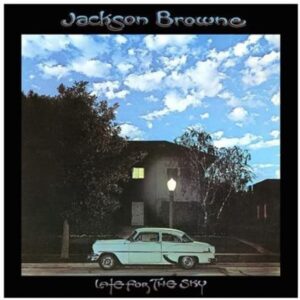
So weit, so gut, Richard! Meine Tageserlebnisse hatten genug Stoff angesammelt, um meine Traumerlebnisse in eine gewisse Richtung zu lenken, das Zauberwort der Traumforscher ist hier „Trauminkubation“. Aber hier kommt nun (für mich) die leichte Ernüchterung vor der wilden Pointe meines „amerikanischen Traums“: als ich um 4.30 Uhr daraus erwachte, stand ich auf und machte ein paar Notizen, aber merkte schon da, wie viel mir aus einem epischen Traum entglitten war. Gerne würde ich die Traumerzählung in voller Länge ausbreiten, so detailfreudig wie Richards Tagebucherinnerung, aber ich bekam nur einen Zipfel davon zu fassen, das dezent-skurrile, melodramatische Ende.
Zum Rest des gestrigen Tages und Abends zählten übrigens noch folgende Dinge: die Nacherzählung besonders „musikalischer Weihnachten 1971“ im Rahmen des dritten Teils meiner „Gospel-Story“, die Frau auf einem Filmfoto von „Two Lane Blacktop“, die wohl die „heisse Braut“ in dem Film zu sein scheint, an der Seite von James Taylor. Und das Auto, das eine besondere Rolle in dem Kinofilm aus der „Easy Rider“-Phase des „New Hollywood“ stammte, ein umgebauter Chevrolet, Baujahr 1955, wie ich. Und ich fand gestern das nun 20 Jahre alte, Berliner Interview mit Brian Eno, wo es um das Album „Another Day On Earth“ ging. Insbesondere suchte ich darin nach seiner bewegenden „Gospelgeschichte“!
4 – Ende eines Traums
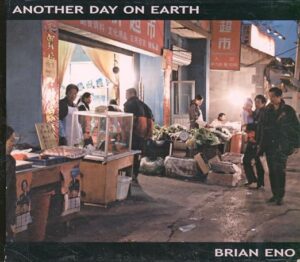
Ich war vielleicht Mitte 20 und mitten im bunten Treiben, in einer amerikanischen Stadt. Früh in den Siebzigern, keine Frage. Es gab viel zu tun, und ich wollte Hippiefreunden aus der Patsche helfen, mit knapp unter 1000 Dollar. Die Einzelsummen schrieb ich auf ein grosses Zeitungsblatt mit einem dicken Filzstift und zählte sie im Kopf zusammen. Meine Freundin sass neben mir – mein Gott, wie schön sie war! Bevor ich zum Hotel am anderen Ende der Stadt aufbrach, in einem alten Volkswagen (!), sagte ich ihr, sie solle in fünf Minuten nachkommen, ich würde die Sache mit dem Geld rasch regeln. Das tat ich auch. Ratzfatz war ich dort, und das Hotel sah aus, wie ich mir ein altes amerikansiches Hippie-Hotel vorstellte, aus einzelnen Fenstern ertönte Rockmusik, ich war in meinem Element. Zügig wickelte ich die Geldsache ab und kam zum ersten Mal zur Ruhe. Ich setzte mich ans Ende eines langen Flurs, es war recht dunkel, spärliches Sonnenlicht fiel durch ein schmales Fenster allein. Und dann kam meine Traumfreundin, vom andern Ende des Flurs. Sie ging langsam auf mich zu, und die Tränen schossen mir aus den Augen, es gab kein Halten. „Was ist los?“, fragte sie mich besorgt, als meine stillen Tränen in lautes Schluchzen übergegangen waren. Ich sagte ihr, nachdem ich etwas zu Atem gekommen war, mir sei bewusst geworden, wie sehr ich sie liebe , und sie schloss ihre Arme um mich und bedeckte mich mit Küssen.
NACHKLAPP: Zu „amerikanisch“?! Nein, einfach der Traumtext. Um von meinen zu deinen endlos gezählten Tagen überzugehen, zum Tanz von Liebe, Glück, und Flüchtigkeit, klicke am besten auf den Songtitel „Just Another Day“ in der vierten Zeile, nach dem Lyrikzitat, und hör dir das Lied an. Nur eine Idee! Richard Williams Tagebucherinenrung findet sich auf seinem Musikblog „The Blue Moment“. Ich hatte heute Nacht meinen „blue moment“! „Aftermath“ war meine erste und einzige Stones-Platte (HIER das ganze Album zu Anhören!), die ich mir als Teenager besorgte. Und „Late For The Sky“ fiel mir zu dieser Geschichte als ideales Cover ein (und ziemlich guter Soundtrack) – sowieso mein Lieblingsalbum des Amerikaners! Nachklapp 2 enthält ein paar Zeilen aus „What We Are“ von Beatie Wolfe und Brian Eno, for all the good reasons!
Nachklapp 2:
Here
In the stars
Can you trace
What we areWhere
Is the line
That divides
You and INights
Fading fast
Made to live
Made to lastAnnie and The Caldwells (Teil 3)
„Eighty years ago, in April 1945, Sister Rosetta Tharpe was Number 2 on the Billboard “race records” chart with Strange Things Happening Every Day – fair comment for the month in which Franklin D Roosevelt, Mussolini and Hitler all died. There were also several noteworthy musical events: Richard Strauss completed Metamorphosen; Rodgers and Hammerstein’s Carousel opened; the audience at a hometown performance by the Berlin Philharmonic were offered cyanide as they left the auditorium; and Tharpe’s hit was the first gospel record to reach that Billboard countdown.“ (David Hutcheon, Mojo, 4/2025)
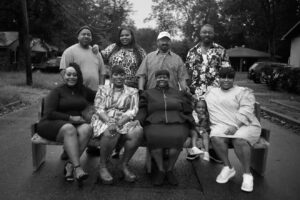
Jetzt wird‘s persönlich, und weihnachtlich, einen Tag vor Pfingsten. Eine meiner „Repertoire-Stories“, aber „mit Butter bei den Fischen“. Die schönsten Weihnachtsgeschenke bekam ich 1970 oder 71, als ich 14 oder 15 war. Ich hatte mir vier Schallplatten gewünscht, und bekam sie in meiner materiell erfüllten Kindheit (die auf anderen Ebenen pure Alpträume bereithielt): Miles Davis Live At Fillmore, Joni Mitchells Blue, Live At Fillmore East von den Allman Brothers, und, nicht lachen, Live At Filmore von Aretha Franklin.
Heimlich schlich ich mich vor den Festtagen in das Schlafzimmer meiner Eltern, und entführte „Blue“ in mein Kinderzimmer: verboten jung und grün hinter den Ohren, wie ich war, ist es erstaunlich, wie sehr manche Kids wie ich (die wohl schon im Mutterleib der schönsten „Musik des Gurgelns und Rauschens“ lauschten), so früh Schätze fürs Leben entdeckten.
Natürlich hatte ich nicht ansatzweise den Erfahrungsschatz von Joni Mitchell, und es war wohl Intuition, viel Vorahnung im Spiel, aber auch das Erleben purer Magie, als ich „Blue“ auflegte und am liebsten in die Lautsprecher gekrochen wäre vor Glück! Ähnlich erging es mir mit den Allmans, und mit dem „elektrischen Miles“. Aber, bei allem Respekt, die grosse Aretha Franklin und ihr Soul lieseen mich eher kalt zurück, genauso wie der Moment, als Ray Charles auf die Bühne sprang. Soul und Gospel liessen mich meistens unberührt. Oder lösten Widerstände aus. Was war da los? Aufklärung im folgenden und finalen vierten Teil, zuvor aber die Fortsetzung von Alexs Besprechung:
„Der Gesang ist rau, aber perfekt abgestimmt; es gibt eine Art telepathisches Zusammenspiel zwischen Annie Caldwells Gesang und den Harmonien ihrer Töchter während der improvisierten Abschnitte des langen Titeltracks und Don’t You Hear Me Calling. Das gilt auch für die Band, die es irgendwie schafft, sowohl extrem tight als auch spontan zu klingen: Wenn die Band, wie Deborah Caldwell behauptet hat, „nicht übt“, dann sind ihre Auftritte hier eine Werbung für den Verfeinerungseffekt, den das Spielen in der Kirche jeden zweiten Sonntag hat.
Es sind großartige, kraftvolle, bewegende Songs, die durch die Tatsache, dass sie live, ohne Publikum, in einer Kirche in der Heimatstadt der Band, West Point, Mississippi, aufgenommen wurden, noch stärker wirken. Die schlichte Produktion gibt Can’t Lose My (Soul) das Gefühl, als würde es direkt vor Ihren Augen passieren, und verleiht den Songs Lebendigkeit und Dringlichkeit, besonders in den extemporalen Momenten. Erfreulicherweise wird die Art von Fake-Antiquitäten vermieden, die oft auf Soulmusik des 21. Jahrhunderts angewandt werden, die in der Vergangenheit verwurzelt ist, als ob sie versuchen würden, den Hörer davon zu überzeugen, dass er ein lange verschollenes Album hört.“
(Finale folgt bald)
Ein Wort zu Alex Petridis: ich lese gerne seine Besprechungen im Guardian, sofern mich die besprochenen acts interessieren. Ich stimme des öfteren nicht mit seinen Bewertungen überein, was ja wohl normal ist (richtig Ärger bekommt er wenn er LUMINAL nur drei Sterne gäbe – ein Witz😉!) aber ich mag seine Schreibe, seinen Witz, und seine profunden Kenntnisse. Meine Lieblingsmusikjournalisten (neben Richard W.), was Interviews und grosse Musikfeatures angeht, sind Laura Barton und Sam Phillips, die vorzugsweise in Mojo und Uncut veröffentlichen. Sie bringen Musiker dazu, sich zu öffnen, und sind selbst gute Storyteller!
Annie and The Caldwells (Teil 2)
Erinnere dich: auf der 2019er Compilation des englischen Gospelnerds war ein Song aus alter Zeit, „Gospel Music About Us“. Und so geht‘s weiter im Text von Alex: „Die Autorin des Liedes, Annie Caldwell, erinnerte sich daran, dass sie „einen Anruf von einem Mann, ich glaube, er hieß David“ erhielt. Es handelte sich um den ehemaligen Talking-Heads-Frontmann David Byrne, dessen Label Luaka Bop die Compilation und anschließend das einzige Album der Staples Jr Singers veröffentlichte. Caldwells Überraschung darüber, dass sie wegen ihrer Platten aus ihrer Jugendzeit kontaktiert wurde, hielt sie nicht davon ab, vorzuschlagen, dass Byrnes Label auch an der Band interessiert sein könnte, die sie in den letzten 40 Jahren geleitet hatte und die aus ihrem Ehemann, ihren Kindern und ihrer Patentochter bestand. Sie waren es, und man kann erkennen, warum. Dennoch ist eine Band, die nach 40 Jahren ihr Debütalbum veröffentlicht und auf angesagten europäischen Festivals spielt, zweifelsohne etwas Besonderes. Das Klima mag einladend sein, aber das wäre nicht passiert, wenn Annie and the Caldwells nicht außergewöhnlich gut wären in dem, was sie tun, und Can’t Lose My (Soul) unterstreicht, wie gut das ist.“ Soweit, so gut.
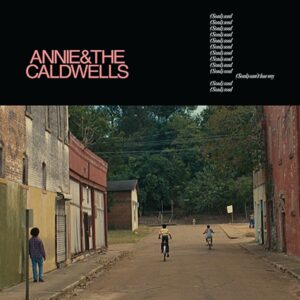
Die Frage bleibt, was hat mich so für eine Musik eingenommen, die prinzipiell nie mein Genre war? Ein ganz kleiner Teil der Antwort ist das Cover, das mich unmittelbar fasziniert hat. Ein weiterer Teil der Antwort ist, dass ich trotz meiner Reserviertheiten gegenüber Gospel immer die Hoffnung hatte, ab und zu ein besonderes Album aus dieser afroamerikansichen Kultir zu finden, ähnlich wie es mir beim Blues ergangen ist: nie einen Narren gefressen an diesem grossartigen Genre, aber ein paar Lieblingsplatten, die ich immer hören kann, und die mich immer begeistern wie John Lee Hookers einzige Platte für das Jazzlabel Impulse und Muddy Waters „Folk Singer“. Bei beiden Platten gibt es ein Quantum Radikalität, oder einen besonderen Sound / Horizont. Hier auch, bei Annie And The Caldwells.
(Fortsetzung folgt)
Die Verweigerung des amerikanischen Traums (Teil 1)
Ende der 1960er bis Mitte der 1970er Jahre durchlebte das Kino der USA eine Umbruchsphase, und dazu gehörten Filme, die von europäischen Einflüssen wie der Nouvelle vague geprägt waren, und die auch die politisch-gesellschaftliche Stimmung in den USA spürbar machten, darunter den Vietnamkrieg. Einige junge Regisseure erhielten von den Studios die Freiheit, mit ihren eigenen Ideen zu experimentieren, und sie entschieden sich für Figuren, die sich dem amerikanischen Traum vom Erfolg durch konsequentes Erbringen von Leistung verweigerten. Diese Nische wird auch als eine Art US-amerikanisches Autorenkino bezeichnet.
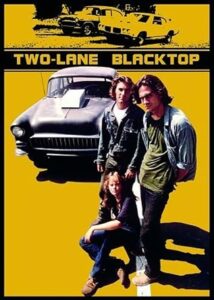
Two-Lane Blacktop (1971; deutscher Titel: Asphaltrennen) von Monte Hellman ist von den Filmen, die ich hier in einer kleinen Serie vorstelle, der mit der umfassendsten Verweigerung. Das fängt schon damit an, dass es gar nicht so einfach ist, zu erklären, worum es geht. Da sind zwei Autos, ein 55er Chevy und ein 1970 Pontiac, deren Fahrer sich ein Wettrennen von West nach Ost liefern; das Ziel wird geradezu unmotiviert und willkürlich dahingeworfen: Washington D.C. Insofern könnte man die Autos auch als Protagonisten des Films ansehen. So wichtig sind diese Autos aber wiederum auch nicht. Die Fahrer liefern sich auch nicht wirklich ein Autorennen, obwohl dem Gewinner die Papiere für den anderen Wagen winken. Sie haben es nicht eilig, sie machen ausgiebige gemeinsame Pausen an Tankstellen und Straßenrestaurants und die Crew des Chevy unterstützt den Fahrer des Pontiac sogar bei einer Panne. Der Film hat keine nennenswerte Story; die Dialoge bringen keine Handlung, wie man sie in einer Geschichte erwarten würde, in Gang. Wie „Easy Rider“ zeigt „Two-Lane-Blacktop“ atemberaubende Landschaften, Wolkenformationen und Horizonte; insofern fungiert die Landschaft als Protagonist. Der größte Teil des Filmes spielt sich, wie bei einer sehr guten Kurzgeschichte, unterhalb der Oberfläche ab, so wie bei einem Eisberg der größte Teil der Masse unter Wasser liegt. Der Roadtrip ist eine Metapher für das Leben, für ein Lebensgefühl. Dies auf sich wirken zu lassen, ist geradezu meditativ. Am stärksten ist in diesem Film also die Atmosphäre, besonders die Ausstrahlung der drei Personen, die, jedenfalls zeitweise – es ist alles ein bisschen launisch – gemeinsam im Chevy sitzen. Der Fahrer wird dargestellt von dem Sänger James Taylor, sein Mechaniker von Beach Boy Dennis Wilson, und die junge Anhalterin spielt Laurie Bird, über deren Hintergrund Monte Hellman in der Dokumentation, die sich auf der DVD findet, Beeindruckendes erzählt, was zu einer besonderen Tiefe ihrer Persönlichkeit geführt hat. Alle drei sind keine ausgebildeten Schauspieler; es gibt auch zahlreiche Kurzauftritte weiterer, sagen wir: echter Personen wie dem Verkäufer von Autoersatzteilen, jungen Männern einer Gaststätte, Leuten beim Start von Autorennen sowie ganz normalen Menschen an einer Bushaltestelle, die gar nicht wussten, dass hier gedreht wurde, was dem Film einen dokumentarischen Touch verleiht.

Der Fahrer des Pontiac, dargestellt von Warren Oats, nimmt immer wieder Anhalter mit, um ihnen etwas aus dem Leben einer seiner fantasierten Parallelwelten zu erzählen. Einmal steigen eine ältere Frau und ein kleines Mädchen ins Auto ein. In der Dokumentation 34 Jahre nach dem Dreh, erzählt Melissa Hellman, die Tochter des Regisseurs, die im Film das kleine Mädchen spielte, dass sie den Film wahrscheinlich hunderte Mal gesehen hat, und dann drückt sie es so aus: „It sucks me in again, every single time I watch it. I think about things while I was there or about my life now and it’s just all related to each other.“ Das trifft es, auch wenn man nicht bei dem Film mitgespielt hat. Two-Lane-Blacktop handelt von Einsamkeit, von Begegnung, von gemeinsamen Zielen und vom Verlust dieser Ziele, von der Flüchtigkeit der Liebe, von der Schönheit der Natur und der Unberechenbarkeit der Technik. Am Ende reißt einfach der Film, und fängt an, durchzubrennen. Auch das ein Subtext. Two-Lane Blacktop wurde zum Kultfilm der Gegenkultur. Das Drehbuch hat Rudy Wurlitzer geschrieben. Monte Hellman hatte auf Empfehlung von jemandem dessen Roman „Nod“ aus dem Jahr 1968 gelesen, und er sagte darüber, he was really impressed with his kind of wierd, but really brilliant view of the humal condition. So eine Formulierung ist für mich trotz ihrer Schwammigkeit ein klarer Auslöser, in das Buch hineinzulesen. Über diesen Link konnte ich das erste Kapitel von „Nog“ lesen, mich hat die Crazyness begeistert, und habe mir daraufhin das Buch gekauft, ein immer wieder neu veröffentlichtes Kultbuch, das in verschiedenen Coverversionen erschienen ist, zum Beispiel in dieser psychodelischen Variante:
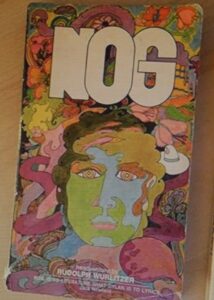
Annie and The Caldwells (Teil 1)
„Die Geschichte des Debütalbums von Annie and the Caldwells ist langwierig und verworren. Die Platte hätte es wahrscheinlich gar nicht gegeben, wenn Sammler nicht auf „Waiting for the Trumpet to Sound“ gestoßen wären, eine Single der Gospelgruppe „The Staples Jr Singers“ aus dem Jahr 1974, die auf einem so obskuren Label in Mississippi veröffentlicht wurde, dass nur ein einziges Exemplar jemals auf Discogs verkauft wurde. Greg Belson, ein in Großbritannien geborener und in Los Angeles ansässiger Soul-DJ, wurde darauf aufmerksam. Er hat sich eine Nische geschaffen, in der er tanzflächenfreundliche Gospelmusik spielt (wenn Sie das Lob des Herrn in der schweißtreibenden, hedonistischen Umgebung des Schwulenclubs NYC Downlow in Glastonbury hören wollen, sind Sie bei ihm genau richtig). Die B-Seite des Songs ist auf der 2019 erscheinenden Kompilation „The Time for Peace is Now“ enthalten: „Gospel Music About Us.“ Soweit Alex Petridis vor einiger Zeit im Guardian. Dass dieses Album bei mir stets von der ersten bis zur letzten Rille läuft, ist interessant, denn bei allem Respekt ist Gospel einfach nie meine Musik gewesen. Was also ist passiert?
(Fortsetzung folgt)
Der letzte Donnerstag im Juli (zweites update)
Meine „Patience der Alben“ für die kommenden Klanghorizonte im Juli hat schon begonnen. Hier ein Update. Eine zündende Idee besorgte der feine Artikel im neuen „Wire“ über Herrn Hosono und seine besondere Beziehung zu einer Verfilmung des Jules Verne-Klassikers „In 80 Tagen um die Welt“ aus dem Jahre 1957…
Und so schauts aus: ausser dem herrlichen „Pacific“ vor ein paar Jahren hat noch nie ein „Hosono-Album“ meine Nachtsendungen bereichert – zudem schulde ich es mir selber, dem fabelhaften Frühwerk des American Analog Set zu ihrem seit den Neunzigern überfälligen Debut zu verhelfen. Wie konnten die nur an mit vorübergehen?! Die Austin, Texas-Variante der Young Marble Giants, aber ganz anders! Eine Stunde ohne ECM und Eno? Letztens kommt es sowieso anders als man denkt!
Kate Perry
American Analog Set
Keith Hudson
Miguel Atwood-Ferguson & Carlos Niño
Ben LaMar Gay
Jeremiah Chiu & Marta Sofia Honer
Al Breadwinner
Haruomi Hosono
Stephen Vitiello„Reviewing reviews“
Not one but two new Brian Eno albums to aurally digest, each made in collaboration with conceptual artist Beatie Wolfe.Lateral brings to mind Eno’s past outer space-related ambient endeavours with younger brother Roger and Daniel Lanois, but with Wolfe’s involvement the album seems to be more of a sonic comfort blanket to wrap oneself up in whilst gazing up at the stars… or wishing one was up there with them. As for Luminal,it’s very much a sister album to Lateral. Wolfe has written its lyrics, and also sings on these 11 songs, which are produced magnificently by Eno. Think luscious dreampop with shades of a country twang and you will be close to what is achieved on this album. The instrumental Lateral and vocal tracks of Luminal are each as captivating as they are deeply moving, and both albums complement each other very nicely too. (David Nobakht)

Icn sammle derzeit, im Netz, Besprechungen der beiden Alben „Luminal“ und „Lateral“ von Beatie Wolfe und Brian Eno bzw. Brian Eno und Beatie Wolfe. Ein knappes, gutes Dutzend ist derzeit verfügbar, etliche werden noch folgen. Neben wenig überraschenden „appraisals“ von den üblichen Eno-Berichterstattern Wyndham Wallace und mir, finden sich respektvolle wie bewundernde, ja, begeisterte Besprechungen vor allem des Songalbums. Eine klare Tendenz, auch wenig überraschend: der Songzyklus wird generell positiver bewertet, mitunter hymnisch gefeiert; das „Ambient-Opus“ bekommt, je nach Standpunkt, das polemische oder das leicht gelangweilte oder faszinierte „Echo“, im Grunde, wie es bei „Ambient Music“ seit „Ambient 1“ (1978) der Fall ist. Ich möchte, wenn ich genug gesammmelt habe (niemand muss mir was schicken, ausser, Jan R., wenn da was in der New York Times zu lesen ist!), die Besprechungen von „Luminal“ besprechen. Zwei Dinge noch: einmal gibt es seit gestern, das in den Klanghorizonten im DLF als „Premiere“ gespielte „Play On“ als Video – HIER – und, zum zweiten, die „lyrics“ von „Play On“, bei den „comments“… (Michael Engelbrecht / Foto: Manuela Batas)
Monthly Revelations revisited (June)
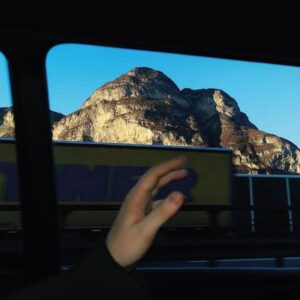
Archive: In memory of Hans Dieter Hüsch / Binge: Adolescence (Netflix) / Radio: „Those were the radio days“ – „Karsten Mützelfeldts kleine Abschiedsrede“ / Talk: Beatie Wolfe‘s „Notting Hill Solo Talk“ / Prose: Jonas Engelmann: Gesellschaftstanz (Klangverhältnisse und Aussenseiter-Sounds) / Film: Nouvelle Vague / Album: Caroline – Caroline 2dream, dream, dream…
„Primal, tribal, apple, egg, vegetable, eel
I have a new canoe but it does not have a wheel
Sex, sleep, eat, drink, dream
Sex, sleep, eat, drink, dream“
(King Crimson)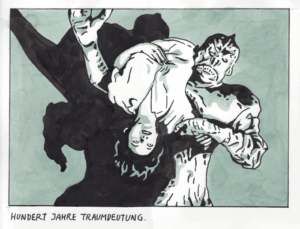
Dreimal „Traumtext“ und Traumdeutung, zuerst ein Song von King Crimson, dann „100 Jahre Traumdeutung“ (Dank an Frank Nikol), und schliesslich, in „comment 1“, „On Electric Country Dream Music“, ein Interview mit Brian Eno und Beatie Wolfe: da sind, auf „Luminal“, die „lyrics“ die Traumtexte.
